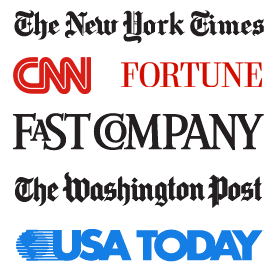How Michele Woodward’s blog posts on happier living turned her into a published author
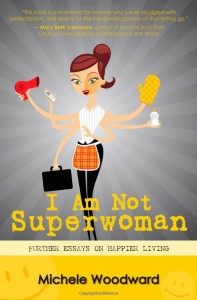 Executive coach and speaker Michele Woodward got into the self-publishing revolution in 2008 – very early days. She has published two books: Lose Weight, Find Love, Declutter and Save Money: Essays on Happier Living and I Am Not Superwoman: Further Essays on Happier Living. They are available on Amazon both as eBooks and via Print-on-Demand. She blogs weekly on topics related to getting unstuck and moving forward in work and in life. And recently marked 300 Daggone Blog Posts, representing six years of blogging.
Executive coach and speaker Michele Woodward got into the self-publishing revolution in 2008 – very early days. She has published two books: Lose Weight, Find Love, Declutter and Save Money: Essays on Happier Living and I Am Not Superwoman: Further Essays on Happier Living. They are available on Amazon both as eBooks and via Print-on-Demand. She blogs weekly on topics related to getting unstuck and moving forward in work and in life. And recently marked 300 Daggone Blog Posts, representing six years of blogging.
Amongst her many accomplishments (former White House staffer, Washington lobbyist, Master Certified Coach with global clients), Michele was a finalist for the Washington Post’s @Work Advice contest. Is that cool, or what?!
Below, she takes us behind the scenes of her non-traditional publishing journey.
DW: I tell Beta Authors that one of the most “do-able” ways to write a short book is to draw on content you’ve already created. Yet a lot of people don’t think of it. How did you think of writing two short books based on your blog posts?
MW: I would be out and about and people would stop me and say, “You know, I love your blog. I print them all out and put them in a three-ring binder and I read them at night before I go to bed.” If that’s not a call for a book to be born, I don’t know what is. So, I began to consider packaging the best blog posts into a book form.
If that’s not a call for a book to be born, I don’t know what is.
– Michele Woodward
DW: How important was it to find an editor to help you organize and edit your posts into a book? In other words, did themes fall out naturally or did it take some thinking to identify them?
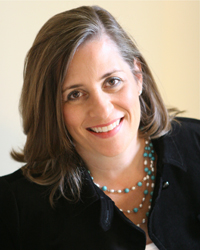 MW: I didn’t use an editor. Well, I talked to an editor who looked at a sample chapter and changed “You gotta wanna” to “You must have enthusiasm.” Obviously, she didn’t get me or my voice! So, I self-edited. In the first book, I assembled the posts chronologically, and in the second I grouped by subject matter. Since the posts had already appeared, they didn’t need heavy editing – just typos and a few syntax errors. I didn’t want to change them drastically since people had already read them.
MW: I didn’t use an editor. Well, I talked to an editor who looked at a sample chapter and changed “You gotta wanna” to “You must have enthusiasm.” Obviously, she didn’t get me or my voice! So, I self-edited. In the first book, I assembled the posts chronologically, and in the second I grouped by subject matter. Since the posts had already appeared, they didn’t need heavy editing – just typos and a few syntax errors. I didn’t want to change them drastically since people had already read them.
DW: You’ve self-published both of your books. Did you consider pitching to a traditional publisher?
MW: I really prefer “non-traditional” or “on-demand” publishing rather than self-publishing, as the latter connotes vanity publishing and that’s not what I did. Before I selected non-traditional publishing, I spoke with two book agents who really liked my writing but said, “You’re not famous enough to sell” in the very competitive self-help genre.
I also spoke with several successful, traditionally published authors who told me that they would go non-traditional with their next books because of the financial rewards. I spoke with non-traditional published authors and learned from their experiences.
DW: Both of your books are available in print and for Kindle. You used BookSurge and then CreateSpace (they are now the same company) for print-on-demand. What has been your experience with POD? Do you recommend this route for first-time authors? Any caveats or things first-time authors should know about using CreateSpace?
MW: I had a really good experience with CreateSpace. My initial intention was to create an audience by using CreateSpace for my first book – then I could go back to the agents and say, “See? I AM famous!” But the experience was so good, and so lucrative that I didn’t go back to the agents.
One tip: you must be decisive. You get so many revisions to the cover art and the interior design and if you waffle, you will pay more. Second tip: start working with them when your content is finished. Their system is set up to go as soon as you upload the text, so have your book done before you get going with CreateSpace.
DW: Did you use an eBook formatting service to convert your books into a .mobi file for Kindle, or did you do it yourself?
MW: CreateSpace did the Kindle conversion for an additional fee. I paid a Virtual Assistant (VA) to put the books up on Apple’s platform.
DW: Are your books (print or digital) available for sale anywhere else besides Amazon?
MW: Yes. Through CreateSpace, the books are available to bookstores throughout the world via some wholesaler. I often see that independent bookstores (like Politics & Prose in DC) buy the book – perhaps at customer request.
DW: I love the whimsical style of both your covers. Did you use the same cover designer? Can you tell us who it was? Choosing a cover is a big decision for most self-published authors. Give us some tips on how to commission a great cover.
MW: Cover design is offered through CreateSpace. I answered some initial questions, then talked with the designer a few times. I think she read a few of the chapters, too, to get a sense. You certainly can hire your own designer, but they must comply with the art requirements of the publisher, which can be a little difficult.
DW: Talk about pricing. How much money are you making on the sale of each POD edition? How did you decide on the Kindle price of your books?
MW: I make $3.50 per book sold on Amazon. [Note: the POD edition of Michele’s books are currently priced at $9.99 and $11.99.] If they buy through my website, I make an additional 90 cents per book (I’m an Amazon affiliate). The yield per book is a little lower if sold through other distribution channels. The Kindle prices were suggested (as a range) by CreateSpace, if I recall. And I recently dropped them.
DW: Finally, the most important question for a business author, what has been your goal in self-publishing? To make money? Have a lovely, 3D business card to hand to clients? Get more clients or speaking engagements? And have you realized your goal with these first two books?
MW: My goal was to meet reader demand, first. Then, to have something to hand out to prospective clients. And then, to make money. So, those goals have been pretty much met. [Note: Michele estimates she generates $100 in sales from her books – print and digital – every month.]
DW: What will you do differently for book #3?
MW: The next book will be original content rather than re-purposed blog posts. It will be more structured and the chapters will be longer. It will still have humor, insight and inspiration, ‘cuz that’s how I roll.
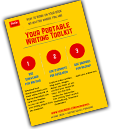

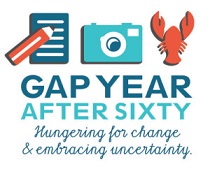 Want to reinvent your life and work after age 60? Follow Sam and me as we reinvent a yin yang life on the coast of Maine and in Brooklyn.
Want to reinvent your life and work after age 60? Follow Sam and me as we reinvent a yin yang life on the coast of Maine and in Brooklyn.







